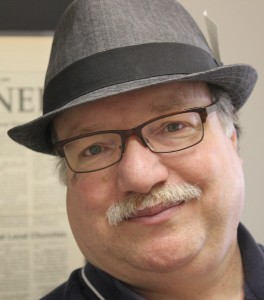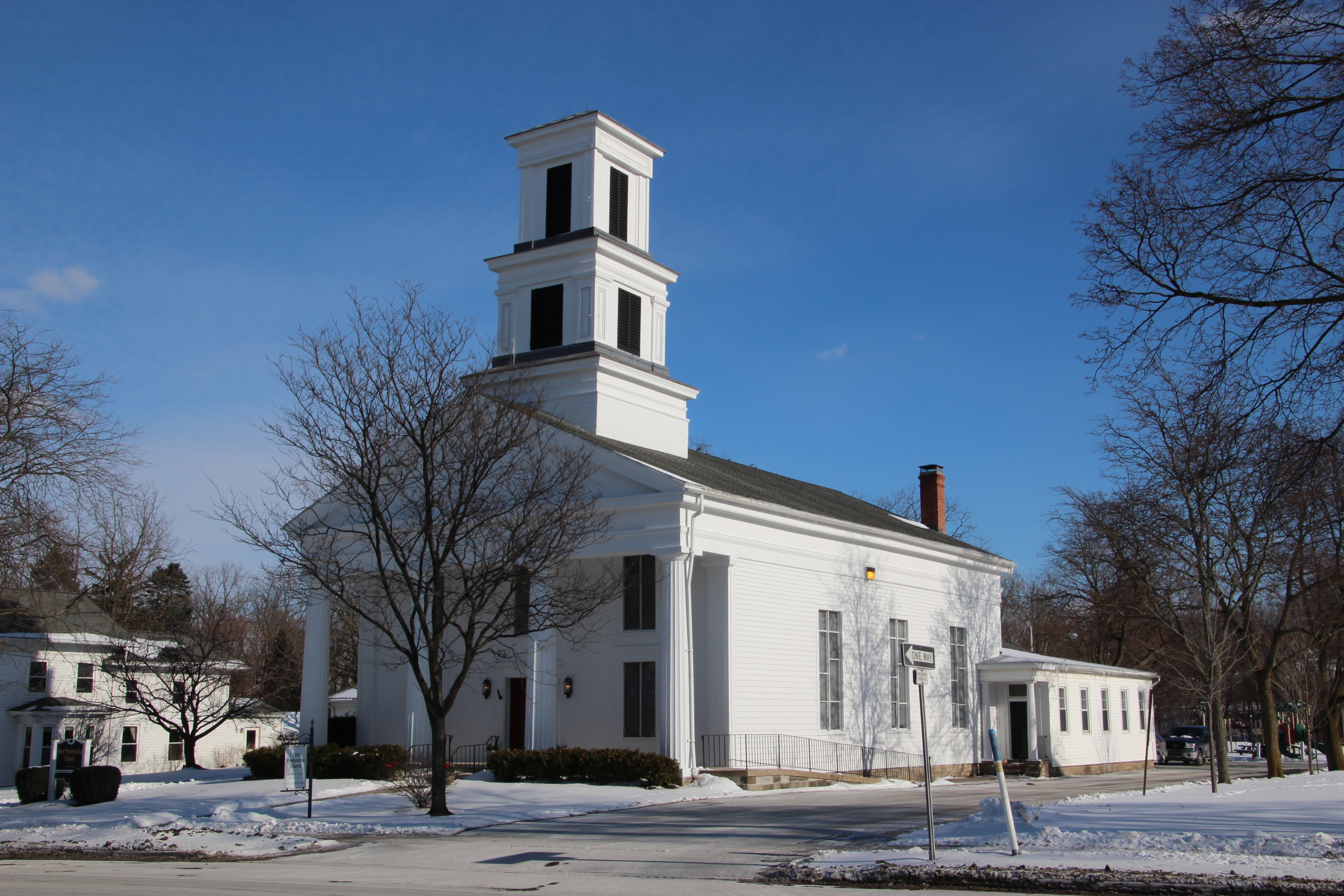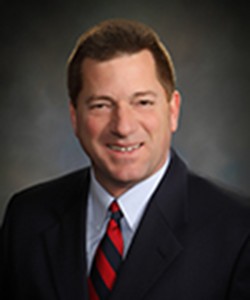Held in Lima – “The Crossroads of Western New York” – the event featured conversations with Marjorie Byrnes, 133rd NYS Assembly District and David DiPietro, 147th NYS Assembly District.

Speakers at the Greater Western New York Town Hall Meeting included Assemblywoman Marjorie Byrnes, 133rd District (left) and David DiPietro, 147th District (right). Photo by Chris Carosa, Mendon-Honeoye Falls-Lima Sentinel
Greater Western New York— July 15, 2023 — The first ever region-wide in-person Greater Western New York Town Hall ended with success this afternoon. Split nearly equally among Democrats and Republicans, attendees discovered they had much more in common than party affiliation might suggest. “The issues dividing our State are more urban vs. rural than Democrat vs. Republican,” Assemblywoman Marjorie Byrnes told those present. Byrnes represents the 133rd District, a total of 29 rural towns in all or portions of five different counties: Livingston, Monroe, Ontario, Steuben, and Wyoming.
To emphasize the point, Assemblyman David DiPietro pointed out, to pass or defeat any bill in the Assembly, the winning majority needs to receive 76 votes out of the 150 members. New York City alone sends 82 voting members to the Assembly. That means whatever New York City wants, New York City gets. DiPietro serves the 147th District which includes all or portions of 30 mostly rural towns in Erie and Wyoming Counties.
The in-person format of this Greater Western New York Town Hall meeting provided those present with a much different opportunity than in previous virtual meetings. Rather than formal speeches and moderated panels, everyone engaged in an open discussion. Elected officials and non-elected citizens spoke to each other as if they were at a networking event. There was a free exchange of ideas as well as periods of brainstorming.
“I feel this is very fascinating,” said Audrey Scibert of the Town of Rush in Monroe County. “It’s like listening to Rush Limbaugh.”
“It was a good opportunity to learn a lot about what is going on in Albany,” said Tawn Feeney of the Town of Conesus in Livingston County. “I knew a little bit about but not as much as I learned from both Mr. DiPietro and Ms. Byrnes.”
“One of the most important things we ever do is to meet people in the community,” says Byrnes. “That’s how I find out what bills are important and what things are affecting people’s lives directly. That’s the knowledge I take with me to Albany.”
During the meeting, Byrnes shared a number of issues she sees as potentially harming underrepresented communities. She also revealed a bit about how the sausage is made in the State Capitol. “The news reported we had to come back for a ‘special session’ in June,” she said. “In reality, the session never ended. We just took a three-week break. How do I know this? Because there was no ice cream. Traditionally, on the last day of the session, the members get ice cream to celebrate. In fact, the regular session was merely postponed because a number of the majority had already left, and leadership was afraid they’d lose any votes on controversial issues.”
Byrnes mentioned three examples of the majority playing games with voters. The more dire issue involves what’s known as “Early Mail Voting.” This bill, which is awaiting Governor Hochul’s approval, circumvents the requirement that changing absentee voting requires a constitutional amendment approved by the voters. Such an amendment was rejected overwhelmingly by a majority of voters in 2021. This defeat meant both Democrats and Republicans felt the change was inappropriate. Still, Byrnes said by keeping all of the original wording and changing only three words, (i.e., from “absentee” to “early mail”), the majority hopes to get around the requirement to amend the constitution.
This could have the effect of depriving you of your right to vote, warned Byrnes.
“‘Early mail voting,’ instead of ‘absentee balloting,’ must be requested,” said Byrnes. “But it could be requested by anyone. Someone could request and change your address. You could go to vote and find out ‘you’ already voted. And once an absentee [‘early mail’] ballot is requested, you cannot vote in person. You cannot change your mind.” While early mail voting may encourage more people to vote, as its proponents claim, it may also make voter fraud easier, according to opponents.
Second, after suffering several court defeats in rural counties, most notably regarding congressional and State assembly redistricting, “the majority passes a law that limits where you can file elections cases and constitutional matters to four counties: New York, Westchester, Albany, and Erie,” said Byrnes. She said the intent of the law (A5874, for those interested) was “to insure there were not different decisions. The law strips away Supreme Court jurisdiction from the 58 mostly rural counties.”
Finally, Byrnes noted that even something simple like the scheduling of the New York State presidential primary is rife with politics. It was moved to April 2nd (as opposed to the normal June date) because the New York City trial of Donald Trump is schedule to start in late March.
Byrnes and DiPietro, both members of the Republican minority in the New York State Assembly generally agreed with one another. What was surprising, however, was that the attendees registered as Democrats also agreed with them. This suggests Byrnes observation that many of the more divisive issues are rural vs. urban and not partisan in nature.
DiPietro took a more skeptical but realistic view about his role. “My goal is to call out the corruption,” he says. “I don’t expect to pass a lot of bills. My goal in Albany is to speak up. Our vote means nothing.”
The corruption discussion resonated with the attendees. “The thing that I found most valuable in today’s meeting was how corrupt our state has become,” said Feeney. “It is so hard to hear that people just up and leave the state by the thousands instead of standing up and fighting against corruption.”
Ken Burdick of the Town of Friendship in Allegany County agrees. He felt the most important issue “is probably the corruption at the State level. The Republicans have basically no say in anything, it’s just what ever the Democrat leadership wants is going to go through regardless. Mr. DiPietro is one of the ones that keeps swinging. He consistently votes ‘no’ against the tyranny we have in Albany. Apparently, it’s going to get worse.”
DiPietro was quick to point out the potential peril New York State laws put its law-abiding citizens in. Regarding New York’s relatively new law that legalized marijuana, he reminds everyone that “when you purchase at a state-controlled dispensary, you have to show ID which immediately goes in the registry.” He then warns, “The Feds can look at it and, since pot is still illegal at the Federal level, you can lose the right to own a gun by buying pot legally in New York.”
Further complicating matters is the tardiness of the State when it comes to approving cannabis dispensaries. “There are only 19 legal dispensaries in the entire State,” says DiPietro. New York State’s official Dispensary Location Verification website lists them all. There are none listed in any of the 17 counties of the Greater Western New York Region. DiPietro says it’s illegal to purchase cannabis from any unauthorized dispensary.
DiPietro noted that the average state passes 700 bills a year. “Wyoming only passes 405 bills a year, but New York passes 15,000,” he says. “These don’t necessarily all become law, but they are passed in rapid fire succession. That’s one bill every 42 seconds.”
To give you an idea of what happened in the past and continues to happen today, DiPietro relayed a story about what happened several years ago. “Shellie Silverstein once shut down all the Republican computers to show who’s in charge. He held Republican ‘home rule’ bills until the end of the session to make sure they stayed in line.” Typically, “home rule” bills are non-controversial bills that only affect the Assembly members district but require a full assembly vote to pass.
Both Assembly members felt the event was worthwhile for them and for those who attended.
“What is great about today is that there are people out there that are still interested in every asset and facet of our government and want to know the truth,” said DiPietro. “Basically, that’s what it is. They want to know the truth. They’ve heard too many politicians talk. They just really want to know what’s happening because people are smart enough to make their own decisions. I think today there was a lot of information about what’s really happening and what we can do. That resonates with people versus a lot of other hot-air politicians. People were able to discuss a lot of good ideas today. That’s what we took out of it.”
Much of the discussion focused on the population drain from New York State. This discussion impressed attendee John Hodgetts the most. “The people leaving New York State and why they’re leaving New York State really got my attention,” said Hodgetts, a resident of the Town of Chili in Monroe County.
While we may be more familiar with what’s happening in the Greater Western New York Region, DiPietro pointed out that it’s New York City that has had the most to fear about this. “I’ve interviewed people who have never lived in New York State but have received census forms saying they are New York State residents just because their relatives live here,” said DiPietro. “Things are worse in New York City because of the post-Covid exodus. That could really change the power dynamic.”
When asked why some people choose to leave rather than fight Albany, DiPietro mentioned that it is in “our nature to stay away from and avoid confrontation. The left knows this and uses it to their advantage.”
Still, this isn’t the feeling of all New Yorkers. “If we stand up and start fighting back and let them know that we’re not going to take it, it might make a difference,” says Burdick. “The only chance we have is to stand up and fight back. If not this time, when? If not us, who?”
Byrnes was particularly impressed with “how much people truly care about their state. The people here don’t want to just flee and run away. They want to stay here, they want to fight, and they want to make our communities better.”
In general, attendees were impressed with the event but clear about the road ahead. “It is interesting to share some ideas with people of the same train of thought, but it is a daunting task,” said Hodgetts.
The speakers introduced topics and ideas that many were not knowledgeable about. Attendees appreciated getting these insights and the lack of major media coverage on some of these issues was also enlightening.
“Most of that stuff I wasn’t aware of,” says Burdick. “I’m glad that it’s getting out there. It’s a constant battle to get the word out there, but I think some of the stuff we heard today, some of the new stuff, you’re going to hear a lot more of. It’s going to go against the grain of what the TV is telling you. Just take it with a grain of salt.”
Finally, there was some concern that more people didn’t take advantage of this in-person town hall format and that those who did attend appeared to be from an older demographic.
“I was disappointed that there weren’t young people interested in attending,” said Doug Best of the Town of Lima in Livingston County. “Assemblyman DiPietro has a difficult job and my advice to him was to choose you battles wisely because you’re pushing a heavy load up a steep hill.”
The Greater Western New York In-Person Town Hall was hosted by the Mendon-Honeoye Falls-Lima Sentinel. It was held on Saturday July 15th from 11:00 AM until 3:00 PM at the Lima, NY Town Hall, 7329 East Main Street, Lima, NY 14485. The event was free and open to all residents of the Greater Western New York Region.
This was the ninth in a series of public Greater Western New York events. More than three hundred people have signed up in advance to attend these events over the past two years. Those interested in future events can sign up by going to https://greaterwesternnewyork.org/.
Nearly a dozen members of the Western New York District of the New York Press Association co-sponsored this third in a series of virtual meetings, including the Mendon-Honeoye Falls-Lima Sentinel, the Akron Bugle, the Alfred Sun, The Batavian, Neighbor-to-Neighbor newspapers (including the Arcade Herald, the East Aurora Advertiser, the Springville Journal, Warsaw’s Country Courier, and the Franklinville Mercury-Gazette), and the SMG-Batavia’s western New York papers (The Daily News and the Livingston County News) and Niagara Frontier Publications (Island Dispatch, Niagara County Tribune Sentinel).
###
The Greater Western New York Region comprises the 17 westernmost counties of New York State and was formally defined by the Treaty of Hartford on December 16, 1786 with the creation of Preemption Line. These counties include: Allegany, Cattaraugus, Chautauqua, Chemung, Erie, Genesee, Livingston, Monroe, Niagara, Ontario, Orleans, Schuyler, Seneca, Steuben, Wayne, Wyoming, and Yates.






